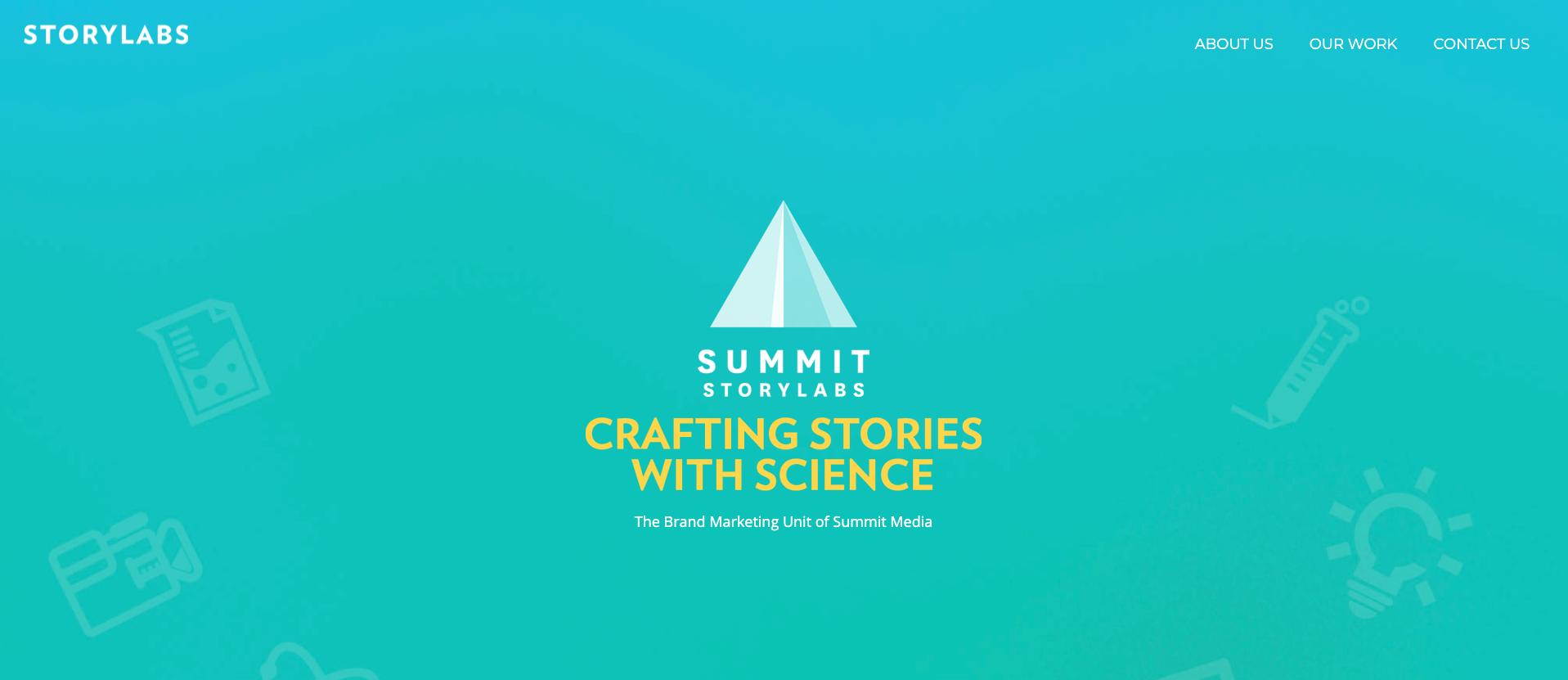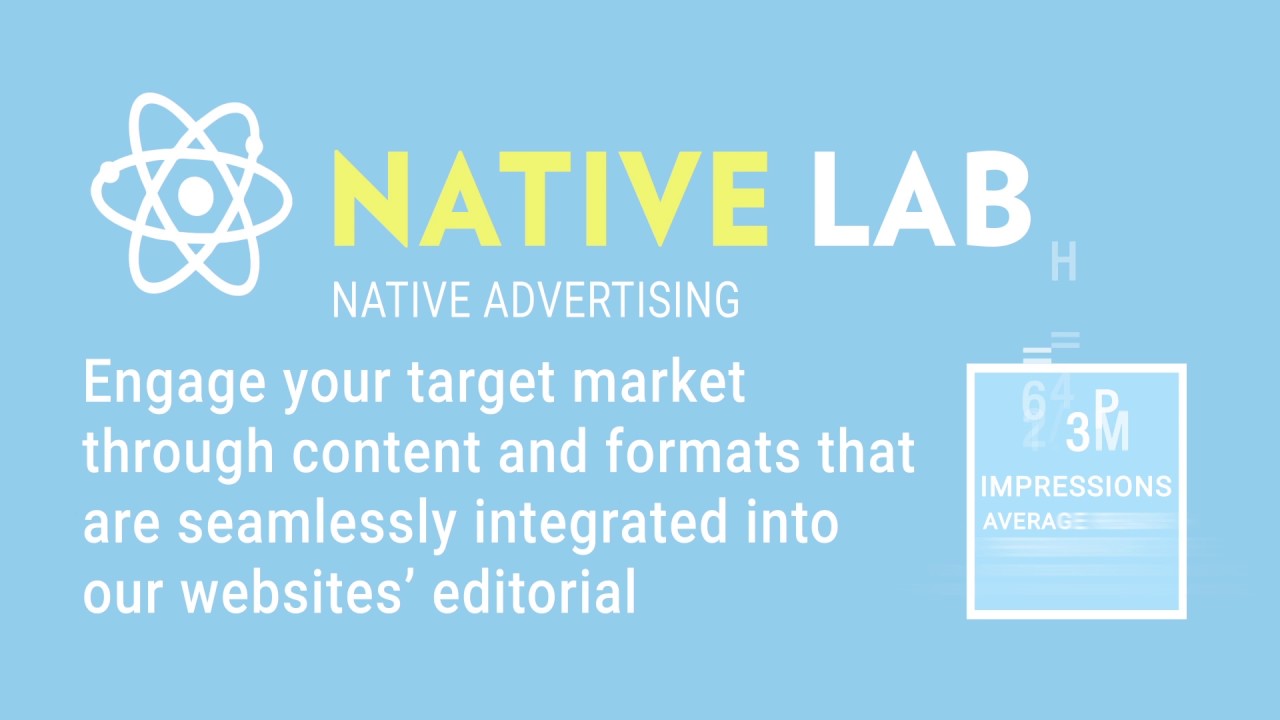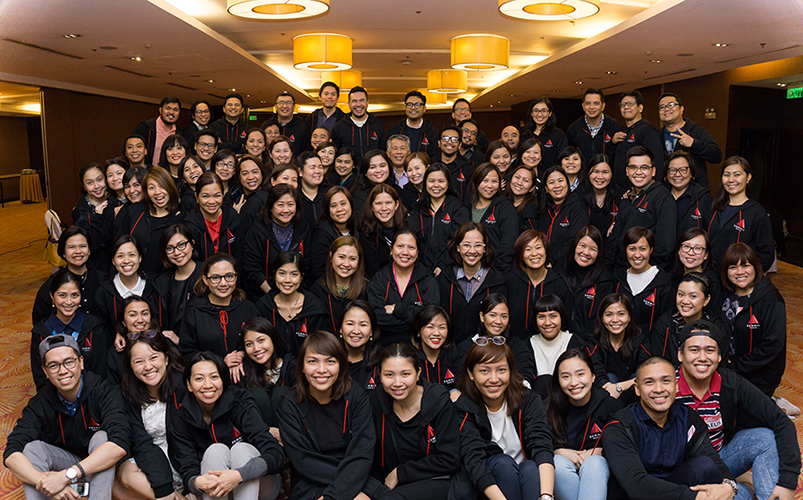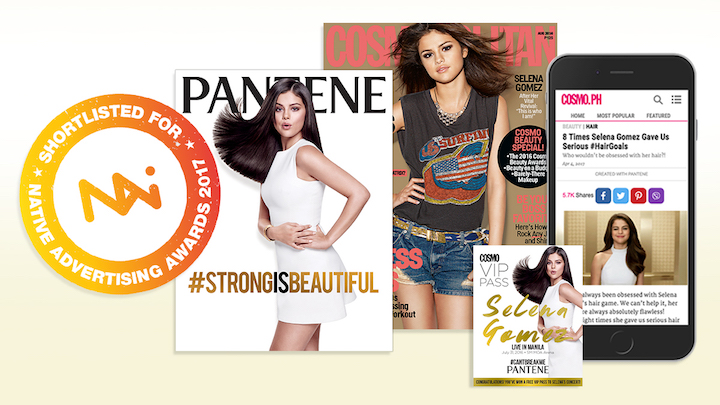Native advertising has definitely spread all over the world. In the Philippines, one of the leading magazine publishers, Summit Media, created an in-house brand marketing unit called StoryLabs a number of years ago.
In a conversation with Iza Santos, StoryLabs Head, and Christine Sandejas, Group Publisher at Summit Media, we learned about their creative process, their use of data, educating the clients about native advertising, and their most important learnings.
Why and how did StoryLabs come to life?
Christine: Originally named Creative Solutions, Summit Media’s brand marketing unit took in three teams under its wing from 2014 to 2015: the company’s print brand marketing group, its digital solutions group, and the then newly formed native advertising group.
In order to scale, increase process efficiency, product quality, and client servicing, the decision was made to merge the three teams and was relaunched as StoryLabs—putting emphasis on the value of data science in creative storytelling.

→ RELATED ARTICLE:
Native Advertising in Russia: How One Media Company Became the Leader
What is your creative process when creating native advertising?
Iza: We start by zooming in on the communication objective of the advertiser, and marrying it with the needs of our audiences as shown by data. We use our storytelling expertise to recommend the right format, channel, and Summit Media brand that will best address the advertiser’s goals.
While some brands still push for a hard sell approach, most of them understand the requirements of a native story.
Working with the brands
How much and in what ways are the brands involved in the creation of content?
Iza: To ensure that our advertising partners’ communication objectives are met, we make it a point to involve them in the conceptualisation and production phase.
Everything is collaborative—their comments and suggestions are always taken into consideration. While some brands still push for a hard sell approach, most of them understand the requirements of a native story.
For the former, we offer other products like network display ads or press releases so audiences can clearly see that the material was produced by clients.
Educating the client about native advertising requires a strategy of its own.

→ RELATED ARTICLE:
Native Advertising in India: How one company set the benchmark
How do you convince brands to invest time, creativity and budgets in native advertising at StoryLabs?
Christine: Educating the client about native advertising requires a strategy of its own. For starters, Summit Media holds annual digital marketing conferences for our advertising partners—we invite practitioners from all over the world to talk about native advertising and content marketing. This year, we invited 3rd Space Australia’s Rob Logan and Brandtale’s Ben Darr, among others.
We also conduct storytelling and insight-mining workshops for selected clients in their offices and equip our account executives with education materials to help advertisers and brands embrace native advertising, whether they’re new to the product or not.
We find that the most convincing asset Summit has to offer is its audience data—an exclusive peek into the behaviour of Summit Media’s 25 million average monthly users, real-time and over time. We maximize this data in all of our education efforts.
Data and editorial expertise
How is data a part of your work with native?
Iza: Simply put, we use insights derived from audience data to pitch stories. Data is also vital for A/B testing—it helps us identify ways to improve a story that has been slow in reaching its internal target.
We also use data to optimize organic performance, spend less on boosting, and provide better story value and experiences to our audiences.
We’re looking at weaning editorial approval in order to improve turnaround time and give our native editors more creative freedom and ownership towards their stories.

→ RELATED ARTICLE:
6 Best Practices for Native advertising and content marketing Success
Is the editorial staff involved in the development of the native advertising you make?
Christine: We’ve been working closely with Summit Media’s editorial teams (publishers and editors-in-chief) to make sure that the story angles we propose to our advertising partners are on brand.
However, since we’ve already groomed brand champions within our native advertising team, we’re looking at weaning editorial approval in order to improve turnaround time and give our native editors more creative freedom and ownership towards their stories.
We will continue to conduct brand immersions, training, and evaluations throughout the year to ensure quality and brand alignment.
How do you use your editorial expertise in your native advertising?
Iza: Most of our native content is derived from top performing editorial content across the Summit Network of 15 brands, each with their own website and social channels.
While we understand that most of our clients choose to stick to concepts and formats that work, there are some who are open to exploring new ideas with us. We value them because they help us explore the interests of our audiences beyond what current data can show.
Summit Media practices strict transparency measures to protect the integrity of our digital brands.
How do you label your native advertising?
Iza: Summit Media practices strict transparency measures to protect the integrity of our digital brands. For starters, our native articles are clearly labeled as sponsored (“Created with [Advertiser]”).
There’s also a line at the bottom of the page stating that the story was created in partnership with an advertiser. As for the videos, we include the advertiser’s logo in the opening or closing frames. We also make it a point to use the handshake tool when we promote our content on Facebook.
The trends and the future
What’s trending right now regarding native advertising at Summit StoryLabs?
Christine: Right now, the majority of our digital advertisers are embracing native advertising in article format. But it’s worth noting that the demand for social media posts and videos continues to increase every month.
Social posts answer client’s need for immediate publishing, at lower production costs. We think this native format will continue to grow in the next months.
New formats and technologies will emerge, but audiences will always go to publishers and brands they trust.
Where do you see native advertising going in the near future?
Christine: Audiences embrace content that is of personal value to them, regardless if it’s branded or not. I believe native advertising will be THE major revenue source of digital publishers around the world.
New formats and technologies will emerge, but audiences will always go to publishers and brands they trust—the ones that never fail to provide valuable, relevant, and accessible content.
The important learnings
Which (if any) mistakes have you learned from regarding creating native advertising?
Christine: For one, we’ve learned not to limit stories to what data has proven most effective. While data guides our brainstorming sessions, we continue to explore stories that may not be as popular to our audiences, but strongly represent what our editorial brands stand for.
We also wish we formed our native social team sooner. A/B testing and optimizing discoverability require a dedicated team and a specialized set of skills that can save a lot of company resources.
Our native social team helped optimize our social spending and played a big part in our natives’ success in terms of performance (90% achievement rate of our internal benchmarks, January to July 2017). In fact, in August alone, 99% of our natives exceeded their internal targets.
In our effort to scale, it’s easy to compromise quality for the sake of advertisers’ need for speed, cheaper production costs, and hard sell messages that offer little value to our audiences.
What important learnings would you pass on to other media companies who are considering setting up a branded content studio?
Iza: In our effort to scale, it’s easy to compromise quality for the sake of advertisers’ need for speed, cheaper production costs, and hard sell messages that offer little value to our audiences. The struggle for quality has been long and strenuous—we’ve invested money and manpower on conferences, workshops, and insight reports to educate advertisers on the best approach to native advertising.
But in the long run, quality brings in the numbers. A good native content leads to higher engagement and more brand affinity, which in turn leads to more projects. This year alone, the number of native content in Q2 is 41% higher than Q1. This year alone, StoryLabs has published 879 articles, 108 videos, and 104 social posts (January to August 2017). We’re very proud of what StoryLabs has accomplished in 2017.
Christine: I think it’s crucial to find the business model that fits your company’s goals and capabilities. Finding that formula requires continuous evaluation and iteration of team processes, brand’s go-to market strategies, business models, and even organizational structures to ensure that you harness the emerging trends and dynamic algorithms of the digital marketing industry.
The best cases
Could you mention an example of a piece of native, created by StoryLabs, that you’ve been particularly proud of
Iza: The first thing that comes to mind is the “Strong is Beautiful” campaign we did in partnership with Pantene and Cosmo.

In line with Selena Gomez’s Manila concert in 2016, Cosmopolitan Philippines and Pantene created a campaign that celebrates strong women through stronger hair. Cosmo utilized its omnichannel touchpoints: free tickets in the July 2016 print issue of Cosmopolitan Philippines, which also fronted Selena on the cover.
The news about the free concert tickets were disseminated through a native article and native social post. During the night of the event, Cosmo arranged a Facebook Live coverage of the concert that extended the experience to Cosmo’s FB fans.
The following month, Cosmo mounted an event called Cosmo Beauty Block, which featured hair and beauty experts to celebrate strong women with stronger hair. The campaign generated more than 2 million in total reach, impressions and engagement on Cosmo Philippines’ Facebook page on the night of the concert alone.
Furthermore, the supporting native article reached more than 2.6 million people on social media, and over a thousand Cosmo Girls sampled the product in the Cosmo Beauty Block event. We’ve managed to amplify Pantene’s campaign by utilizing Cosmo, a brand that mirrors the same advocacy, and its audiences, who have become ambassadors of the campaign’s message. (This campaign has been shortlisted in the 2017 Native Advertising Awards, under the Best Integrated Program category)
Another project we are proud of was Yummy’s (Summit Media’s food brand) partnership with Coke Philippines. We created a recipe video series that is native to Yummy.ph, featuring Filipino recipes that is best served with ice-cold Coke. Coke’s goal was to introduce the idea that no Filipino home-cooked meal is complete without their classic product.
The videos garnered over 650,000 and ushered three more clients to try native videos with Yummy.ph within the same quarter. By the end of 2016, we were able to produce 30 native videos in just four months.
During their keynote at the Internet & Mobile Marketing Association of the Philippines (IMMAP) Digital Conference held last October, Twitter Managing Director Parry Singh recognized Summit Media's excellence in native advertising when he cited the Coke videos as an example of an outstanding native content that provides value for audiences, the media brand, and the advertiser. Moreover, coke renewed their contract with yet another video series this 2017.
 By
By